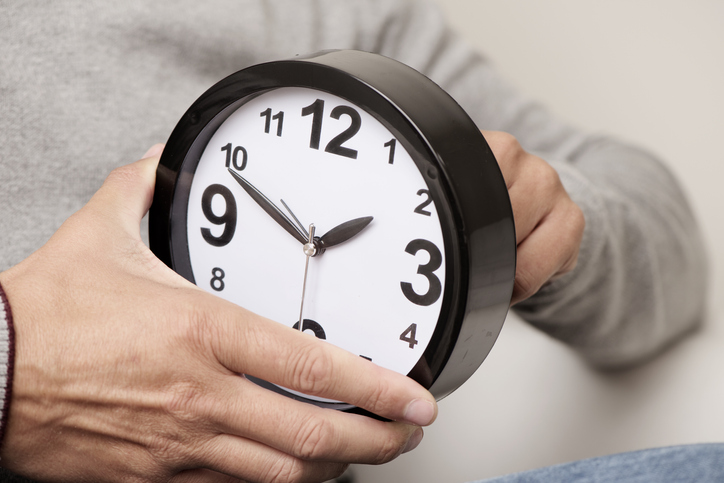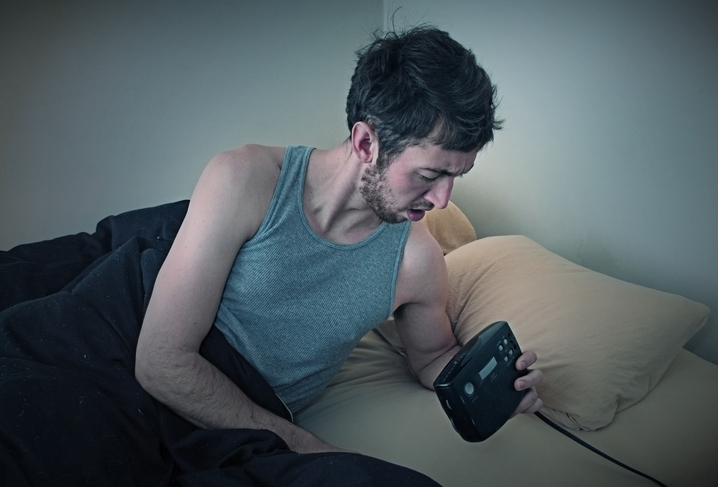
How To Adjust To Daylight Savings Time


How To Adjust To Daylight Savings Time
Similarly, you might feel robbed when the clock moves forward in the spring, making you wake up an hour early. This is how daylight savings time works. In this article, we will cover potential health effects of moving the clock, as well as how you can adjust to this change easier.
What Is Daylight Savings Time?

The Earth rotates around the sun in a tilted manner, which results in different sunrise and sunset times throughout the year. Therefore, days are longer in the summer and shorter in the winter.
Daylight savings time, also known as summer time, refers to moving the clock to obtain more daylight in the morning. This practice takes place in most European countries and North America. The clock moves backward from 3 A.M. to 2 A.M. in the fall, and then forward from 2 A.M. to 3 A.M. in the spring.
Initially, the idea was to conserve candles by waking up earlier in the morning and relying on daylight. This was jokingly presented by Benjamin Franklin in the 1780s. However, the actual use occurred much later during World War I. Similar practices occurred even in ancient civilizations. They adjusted daily routines, work, and meals according to the sun.
Recent research, however, found that this is a bad idea for public health. In fact, many countries, including the US, are eliminating it. Here are some of the reasons why and ways to minimize the negative health effects of daylight savings time if you can’t avoid it.
Health Effects Of Daylight Savings Time On Your Brain And Body
Sleep Disruption And Jet Lag
When you have to wake up an hour early, you’ll experience some sleep deprivation. Also, your body has to adjust to living an hour earlier.
Jet lag is a very common consequence of daylight savings time, even though you’re not traveling. Some common symptoms include:
- Difficulty falling asleep or waking up
- Daytime sleepiness
- And mood changes
The human body without any light exposure tends to longer days than 24 hours. This explains why turning the clock back in the fall or traveling west feels easier to adjust than the spring or traveling east.
However, other factors influence the effect of daylight savings time on sleep, such as the latitude. Additionally, the effects vary with seasonal focus, such as the clock moving in fall or spring.
Turning the clock forward in the spring strongly affects sleep quality and quantity. Three men participated in a study investigating the spring transition. Sleep measurements were taken two nights before and three nights after the clock change, with the same sleep and wake times.
Sleep duration did not change after the transition. However, they got more stage 4 (deep) sleep, indicating that they may have increased sleep pressure from the previous night. In addition, participants experienced difficulty with adjusting to new bedtime routines. Their internal clocks were still in the pre-transition state days after the clock change.

Another study included 10 healthy participants. Monitoring took place over 10 days around the spring transition period (before and after clock change). Following the clock transition, sleep duration was one hour shorter, and sleep efficiency dropped by 10%.
While fall transitions might appear easier, it still does affect our sleep and health. A total of 120 participants held sleep diaries and had activity watches a week before and after the fall clock change. Similarly, the internal clocks maintained their orientation in regards to bed and wake times until 5-6 days after the transition. Furthermore, short sleepers experienced disrupted sleep and woke up more frequently. They also went to bed earlier and woke up later.
Moreover, the fall transition tends to affect the oral temperature as well. Participants had significantly higher oral temperatures after waking up. The temperature matched the one normally seen at 9-10 A.M. without the clock change.
Generally and sensibly, ‘night owls’ have much more difficulty adjusting to spring clock change, while ‘morning individuals’ find it harder to adjust to fall transition.
Increased Incidences Of Heart Attacks, Injuries, And Car Accidents
Daylight savings time and jet lag affect your body way more than sleep. Both sleep deprivation and time adjustment correlate with heart attacks in older people. People are also more tired and cognitively impaired, so rates of injury and accidents also steeply increased.
A study involved 935 patients, and aimed to detect any influences of daylight savings time on acute myocardial infarction. 328 were in the study group, while 607 were in the control group. Incidences of heart attack significantly increased a day after the spring transition. That day, patients who experienced acute myocardial infarction had higher calcium channel blocker activities than the control group.
Researchers monitored traffic accidents in England and Wales over a 10-year period. The focus was on 4 weeks before and 4 weeks after the clock transition, both fall and spring. Traffic injuries significantly increased after the spring transition, mainly due to higher frequency of accidents during evenings.
Another study in the US observed car accident frequency over a 20-year period. An increase in fatal car accidents occurred one day after spring and fall transition. The risk of a fatal car accident after the clock change is due to sleepiness (spring transition) and sleep disruption (fall transition).
Lastly, an analysis of workplace injury frequencies showed that workers experienced injuries more frequently, and more severe, on the first Monday after the spring transition.
More Fatigue And Worsened Cognitive Performance

Daylight savings time might also negatively affect your mood and cognition. As a result of feeling jet-lagged, fatigue is very common as well.
Participants’ cognitive performance assessment occurred over a detection game. After the clock change, participants had much more difficulty finishing a level in the game. They either ran out of time or detected false objects.
A study including adolescents aimed to explore possible connections between daylight savings time and test scores. In the state of Indiana (US), average SAT scores were significantly lower in regions that practice clock transition when compared to regions that remain on standard time.
Furthermore, the fall transition also correlates with bad mood. Studies show an 11% increase in overall sadness and bad mood. In addition, the sleep disruption leads to a decrease in attention and motivation.
How To Adjust To Daylight Savings Time
Start Adjusting Your Sleep And Other Circadian Cues Days Before
Instead of shocking your body with a sudden one-hour transition, you can start adjusting your body and mind before the clock changes. Here are some tips:
- Start eating your dinner and going to bed earlier to adjust to spring transition, starting from a week before the clock changes. You can start adjusting your routines by 15 minutes each day. This eases the effects of daylight savings time on your body.
- Dim the lights and use blue light blocking glasses after sunset or 2 hours before the desired bedtime. Circadian cues largely depend on light-to-dark transition. Reducing exposure to light before going to bed can significantly improve sleep, and thus help you adjust to a new sleep schedule.
- Utilize a relaxation routine before bed. It is very important to give your body some time to relax, which can greatly help you before going to bed.
Protect Your Sleep Quality
Daylight savings time can cause sleep disruptions. It is crucial to maintain your sleep quality as much as possible by eliminating any potential sleep disruptors. Also, make sure to allocate enough time for sleep. Always give your body a full night of sleep.
Use Sleep Aid Supplements
If you’re finding trouble adjusting to a new sleep schedule, you can try using supplements. Melatonin is a major sleep-wake regulator, and supporting its production will improve your sleep. However, taking melatonin supplements while crossing less than 3 time zones is generally not beneficial.
Our Sleep Breakthrough provides necessary nutrients to support healthy melatonin production and relaxation to get you high-quality sleep.
Make sure to take it one hour before the desired bed time.
References
- Abu-zaghleh H. Daylight Saving Time, History, impacts, and case study from Jordan. Accessed January 26, 2023. https://www.academia.edu/10988165/Daylight_Saving_Time_Hiba_N
- Bonmati-Carrion MA, Revell VL, Cook TJ, et al. Living without temporal cues: A case study. Front Physiol. 2020;11:11. doi:10.3389/fphys.2020.00011
- Harrison Y. The impact of daylight saving time on sleep and related behaviours. Sleep Med Rev. 2013;17(4):285-292. doi:10.1016/j.smrv.2012.10.001
- Lahti TA, Leppämäki S, Lönnqvist J, Partonen T. Transition to daylight saving time reduces sleep duration plus sleep efficiency of the deprived sleep. Neurosci Lett. 2006;406(3):174-177. doi:10.1016/j.neulet.2006.07.024
- Harrison Y. Individual response to the end of Daylight Saving Time is largely dependent on habitual sleep duration. Biol Rhythm Res. 2013;44(3):391-401. doi:10.1080/09291016.2012.692255
- Monk TH, Folkard S. Adjusting to the changes to and from Daylight Saving Time. Nature. 1976;261(5562):688-689. doi:10.1038/261688a0
- Zhang H, Dahlén T, Khan A, Edgren G, Rzhetsky A. Measurable health effects associated with the daylight saving time shift. PLoS Comput Biol. 2020;16(6):e1007927. doi:10.1371/journal.pcbi.1007927
- Jiddou MR, Pica M, Boura J, Qu L, Franklin BA. Incidence of myocardial infarction with shifts to and from daylight savings time. Am J Cardiol. 2013;111(5):631-635. doi:10.1016/j.amjcard.2012.11.010
- Alsousou J, T. Jenks O, Bouamra FL, Willett K. Daylight savings time (dst) transition: the effect on serious or fatal road traffic collision related injuries. Orthopaedic Proceedings. Published online 2018.
- Varughese J, Allen RP. Fatal accidents following changes in daylight savings time: the American experience. Sleep Med. 2001;2(1):31-36. doi:10.1016/s1389-9457(00)00032-0
- Barnes CM, Wagner DT. Changing to daylight saving time cuts into sleep and increases workplace injuries. J Appl Psychol. 2009;94(5):1305-1317. doi:10.1037/a0015320
- Nag S, Yu AB, Mitroff S. How is Daylight Saving Time still a thing?: Disruptions from Daylight Saving Time transitions lead to cognitive performance deficits. PsyArXiv. Published online 2021. doi:10.31234/osf.io/37svc
- Hansen BT, Sønderskov KM, Hageman I, Dinesen PT, Østergaard SD. Daylight savings time transitions and the incidence rate of unipolar depressive episodes. Epidemiology. 2017;28(3):346-353. doi:10.1097/ede.0000000000000580
- Lahti T, Sysi-Aho J, Haukka J, Partonen T. Work-related accidents and daylight saving time in Finland. Occup Med (Lond). 2011;61(1):26-28. doi:10.1093/occmed/kqq167
- Saving daylight, losing sleep: Insomnia Awareness Day is March 10. American Academy of Sleep Medicine – Association for Sleep Clinicians and Researchers. Published March 3, 2014. Accessed January 26, 2023. https://aasm.org/saving-daylight-losing-sleep-insomnia-awareness-day-is-march-10/
- Herxheimer A, Petrie KJ. Melatonin for preventing and treating jet lag. Cochrane Database Syst Rev. 2001;(1):CD001520. doi:10.1002/14651858.CD001520
